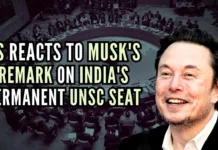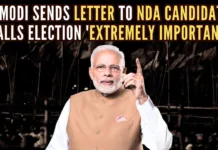
India to involve its Private sector in Defence production
[dropcap color=”#008040″ boxed=”yes” boxed_radius=”8px” class=”” id=””]T[/dropcap]he Narendra Modi government’s endeavors to involve the domestic private sector in defence production will go a long way strengthening national security. It will also give the much-needed boost to manufacturing.
A.K. Antony, who was defence minister for eight years in that wasted decade, presided over a crumbling military-industrial complex.
The “broad contours” of the long-awaited “strategic partnership (SP)” policy to boost the Indian private sector’s role have been finalized, reported The Times Of India (May 21). “The defence acquisitions council (DAC), chaired by defence minister Arun Jaitley, also gave the green signal to the Army to go ahead with its long-term plan to induct three squadrons (39 choppers) of attack helicopters for its three ‘strike’ corps, among other modernization proposals.”
It may be recalled that it was the Bharatiya Janata Party government in 2002 that had allowed the participation of domestic companies in defence. At that time, Union minister Pramod Mahajan had underlined an anomaly: India had faith in foreign companies, which supplied arms and armaments, but not in Indian majors for the same, which were not allowed to strengthen the defence sector. At that time, the government also allowed 26 per cent foreign direct investment of FDI in the sector. Now, 100 per cent FDI is allowed with government approval.
Everything, however, came to a standstill during the 10 years of UPA rule (2004-14). A.K. Antony, who was defence minister for eight years in that wasted decade, presided over a crumbling military-industrial complex. He is an honest politician, but his tenure witnessed a series of scams, the fallout of which severely affected procurement and badly hurt defence preparedness.
The requirements of military—tanks, fighter jets, warships—mounted while Antony was in office. No howitzers were purchased after 1987; it is only recently that they got inducted into the Army. The acquisition of new submarines got delayed. When he demitted office, the armed forces had a shopping list with $100 billion. The military analyst, Rear Admiral (Retired) K. Raja Menon, called him the “worst defence minister ever.”
[dropcap color=”#008040″ boxed=”yes” boxed_radius=”8px” class=”” id=””]T[/dropcap]hat was a bit harsh, because V.K. Krishna Menon, Jawaharlal Nehru’s alter ego, will any day win that position hands down. For he was a traitor, while Antony was merely incompetent, but that’s another story for another day.
Instead of viewing private players with suspicion, the government wants their role to increase both in terms of their capabilities and their contribution to defence production.
What made the matters worse during UPA rule were Antony’s socialist leanings. He did little to restructure eight defence public sector undertakings (DPSUs), 39 ordnance factories, three defence shipyards, and 52 DRDO laboratories. Typically, he despised the private sector. This resulted in India’s reliance on defence imports rising to almost two-thirds.
If there is one area in which the Modi regime has done well, and infinitely better than what the previous government did, it is defence production. Instead of viewing private players with suspicion, the government wants their role to increase both in terms of their capabilities and their contribution to defence production. At present, they contribute less than 5 per cent to the procurement. Simultaneously, the government is removing preferential treatment, like fiscal sops, given to DPSUs.
The main takeaway of the recent DAC meeting was the SP policy under the Make in India thrust of the Modi government, says the Times of India (TOI) report. This “initially opens up four major segments of fighter jets, helicopters, submarines, and armored vehicles (tanks and infantry combat vehicles) for private sectors players.”
[dropcap color=”#008040″ boxed=”yes” boxed_radius=”8px” class=”” id=””]T[/dropcap]hese developments augur well for national security. However, everything is not hunky-dory. To begin with, for almost eight out of 36 months of the Modi government, the Ministry of Defence has been headed by a part-time Minister, Jaitley, who is surely not the most competent Cabinet member. As Finance Minister, his record is less than stellar; and he knows even less about defence matters.
And, finally, the entrenched interests are playing spoilsport.
Second, the red tape is yet to loosen. “Bureaucratic apathy is among the biggest hurdles to the government achieving its Make in India targets,” Laxman Kumar Behera, a research fellow who tracks military expenditure at the New Delhi-based Institute for Defence Studies and Analyses, told India Today in February this year.
And, finally, the entrenched interests are playing spoilsport. The TOI report talked about “the stiff resistance put up by the public sector lobby against the SP policy.”
On the whole, however, the sense of purpose and the vigor infused into the defence ecosystem by the Modi government will stand national security in good stead.
Note:
1. Text in Blue points to additional data on the topic.
2. The views expressed here are those of the author and do not necessarily represent or reflect the views of PGurus.
- Liberty Is Penalized, Violence Goes Untouched - December 21, 2019
- Rahul’s Howdy bloomer - September 22, 2019
- Chidambaram’s hypocrisy - August 22, 2019











We have some private corporates who can prove their worth provided they get proper support and advice ,who feel proud of making India quite strong in the back ground of adverse neighbors.
Or a better short term approach is to encourage entreprenaurship in our PSUs like Bharath Electronics,DRDOs,BARCs,and plethora of defense labs/ research institutions.fantastic minds are rotting there for want of encouragement, some of them with a bit of readjustment will be entreprenaurs making valuable contribution to defense.
I think this writer is excessively positive of our private companies contributing to defense.Most of our private industries depend on foreign hand me downs ( technologies) and screw driver technology.These idiots will have very little to contribute other than tie up with foreign companies and locally assemble.It is like comparing a Reliance and ISRO.Reliance ambani bandicoot borrowed entire technology for their factories from abroad where as ISRO developed local expertise to a very large extent.If India has to become strong in technology/defense, start investing heavily on educational institutions of high order like super IITs where only the brightest get entry and encourage most of the pass outs to entrepreneurship.In other words, education given instead of generating coolie engineers, make them entrepreneurial engineers.After possibly 20 years of efforts, we will start seeing results of these bright kids setting up cutting edge technologies.Our Industrial behemoths are a bunch of paper tigers when it comes to high technology as it exists in defense.These jokers are better off manufacturing tooth pastes,toiletries,ketchups than attack helicopters,night vision equipment, surveillance cameras and high power artillery unless our govt. wants to make them steal drawings/technology from companies abroad and copy the products here.There are no short cuts in life especially in high tech defense production.
I think your description of the private companies could easily be applied to the Public Sector Defense Units. SU-30’s arrive in kits from Irkut/Russia and are assembled by HAL. How many critical components of the Tejas are from overseas; refueling probe, engine ect. How much of the navy’s electronics and battle systems come from overseas?
The one difference is that the public sector has been in this defense business for nearly 100 years, compared to the private sector who has only being let in now on a wide scale.
As far as calling the private sector “idiots”, please read up on their participation in the construction of the Arihant-class submarine, when given a chance they can preform.
You castigate the “Industrial behemoths” for acquiring overseas technology. But you miss the point of these companies. They create a product for which there is a demand and sell it with the best profit margin. If it costs less to acquire a component than to ‘research it’/’build it from scratch’ you should pick the least costly approach. If the government wants 100% indigenous components then they need to fund the private sector with research grants to make it financially feasible.
You can invest all you want to in educational institutions, but if you are not able to retain talent then what will you gain. The lead engineer for AMD’s graphic processors is Indian, the head of DARPA in the U.S. was born in New Delhi. Will you pay top rupee and give the engineers the best labs and resources to do their work? I don’t think the public sector is set up to deliver this to them. And why would “entrepreneurial engineers” engage in this field unless they can set up their own companies and own their own patents?
Fair enough..I have a case but I am not able to put it into a coherent way.Let me hear some more arguments against my rant which is targeting big industrialists like tatas/birlas/ambanis/ruias/mallayas who have been uninspiring to me.We need a new set of entrepreneurial culture, make in India defense approach is the right spark to get it started.We need new players,new approach, less greed,total no on crony capitalism, not go back to same old bandicoots.